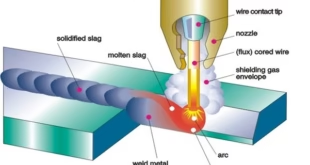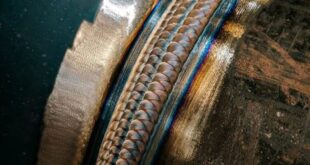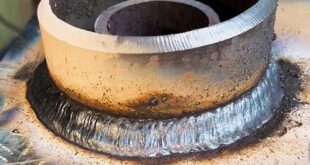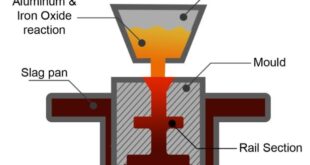Ultrasonic Welding Process
Introduction
Ultrasonic welding is a process used to join two or more pieces of material by applying high-frequency mechanical vibrations to the parts being joined. The process is widely used in manufacturing for joining plastics, metals, and other materials. It has become increasingly popular because it offers a number of advantages over traditional welding methods.

The Science behind Ultrasonic Welding
The process of ultrasonic welding involves the conversion of high-frequency electrical signals (20-40 Hz) to ultrasonic waves that generate mechanical vibrations, which are amplified and delivered to weld the two parts. This method produces clean and accurate welded joints with quick setting times, making it a popular joining mechanism in many industries. The welding process is non-invasive and non-destructive, making it an ideal solution for many manufacturing applications.
Ultrasonic welding is a highly effective and precise welding process that uses ultrasonic waves to join together thermoplastics and thin metal parts without the use of additional filler materials. This technology has found wide use in various industries, including medical, electronics, and automotive manufacturing.
History
The history of ultrasonic welding can be traced back to the 20th century when arc welding techniques were the prevalent plastic welding processes. However, these techniques produced heavy and unwieldy parts, leading to the development of ultrasonic vibration for welding plastics. The technique was first used in welding hard and compatible plastics using a probe that touches the two parts to be welded together. This development quickly became an important part of the aircraft construction industry, ahead of spot welding.
The modern development and use of ultrasonic welding can be attributed to Robert Soloff, a lab manager at Branson Instrument, who mistakenly discovered that the ultrasonic probe does not need to touch thermoplastic parts to weld them. Soloff, in collaboration with Seymour Linsley, was awarded the patent for the welding process in 1965, leading to a boom in plastic toy production and the acceptance of important parts of several commercial products.
Components of an Ultrasonic Welding System
The main components of an ultrasonic welding machine include the generator, machine press, welding stack, transducer, booster, welding horn, and support tooling. The generator converts electrical power to the required voltage and high frequency, while the machine press holds the welded system and applies force that holds the welded joint together. The welding stack comprises the transducer, booster, and welding horn, which provides ultrasonic machine vibration, and the frequency must be close to the generator’s frequency for quality welded joints.
Types of Ultrasonic Welding Machines
There are two main types of ultrasonic welding machines: bench-top and portable. Bench-top machines are larger and more powerful, making them ideal for high-volume production. Portable machines, on the other hand, are smaller and more compact, making them ideal for on-site or mobile applications.
Choosing the Right Ultrasonic Welding Machine for Your Application
When choosing an ultrasonic welding machine, there are several factors to consider. These include the size and shape of the parts being joined, the material being used, and the required production rate. It is important to choose a machine that is capable of delivering the required amount of energy to produce a strong and consistent weld.
Setting Up the Ultrasonic Welding Process
Setting up the ultrasonic welding process involves several steps. These include selecting the appropriate equipment, setting the parameters for the process, and testing the process to ensure that the welds meet the required standards. It is important to follow the manufacturer’s instructions carefully and to seek the advice of an experienced technician to ensure that the process is set up correctly.
Weld Quality Control and Inspection
Once the ultrasonic welding process is complete, it is essential to verify the quality of the weld. There are several methods of quality control and inspection that can be used, including visual inspection, leak testing, and destructive testing.
Visual inspection involves examining the weld visually for any cracks, voids, or other defects. Leak testing involves applying pressure to the weld and checking for any gas or liquid leakage. Destructive testing involves breaking apart the weld to verify its strength.
Common Applications of Ultrasonic Welding
Ultrasonic welding is a versatile process that is used in various industries, including automotive, medical, and electronics. It is used to join thermoplastic parts, fabricate microfluidic devices, and assemble electronic components. The automotive industry uses ultrasonic welding for assembling headlights, taillights, and instrument panels. In the medical industry, it is used for assembling medical devices such as IV bags, catheters, and inhalers. The electronics industry uses ultrasonic welding to assemble batteries, capacitors, and sensors.
Troubleshooting Ultrasonic Welding Issues
Despite its many benefits, ultrasonic welding can experience issues that can affect the quality of the weld. Common issues include inadequate energy, insufficient pressure, and misaligned parts. These issues can result in weak or incomplete welds, and it is essential to troubleshoot and address them promptly.
Best Practices for Ultrasonic Welding
To ensure high-quality welds and avoid issues, there are several best practices that should be followed when performing ultrasonic welding. These include properly preparing the parts to be welded, selecting the correct welding parameters, ensuring proper alignment of the parts, and maintaining proper machine maintenance.
Safety Considerations in Ultrasonic Welding
Ultrasonic welding is generally considered a safe process, but there are certain safety considerations that need to be taken into account. Here are some of the key safety considerations for ultrasonic welding:
- Hearing Protection: Ultrasonic welding generates a high-pitched sound that can be harmful to hearing. Ear protection should be worn by all personnel working near an ultrasonic welding machine.
- Electrical Safety: Ultrasonic welding machines use high voltage electrical systems. Proper grounding and electrical safety measures should be in place to prevent electric shocks and other hazards.
- Sharp Edges: Some materials used in ultrasonic welding can have sharp edges that can cause injury if mishandled. Operators should be trained to handle materials safely and wear appropriate protective gear.
- Equipment Maintenance: Ultrasonic welding machines require regular maintenance to ensure that they are operating safely and efficiently. Machine operators should be trained on how to perform routine maintenance tasks and when to contact a maintenance professional for more complex repairs.
- Ventilation: Ultrasonic welding can produce fumes and gases, particularly when certain materials are being welded. Adequate ventilation should be in place to prevent exposure to harmful substances.
Ultrasonic Welding Compared to Traditional Welding Processes
Ultrasonic welding is a unique welding process that offers several advantages over traditional welding methods. Some of the key differences between ultrasonic welding and other welding processes are:
No need for filler materials
In many traditional welding processes, such as MIG and TIG welding, filler materials are needed to join two materials together. However, in ultrasonic welding, the two materials are fused together using high-frequency vibrations, eliminating the need for filler materials.
Faster and more efficient
Ultrasonic welding can be completed much faster than traditional welding methods, reducing production time and increasing efficiency. Additionally, since ultrasonic welding does not require the use of flames or heat, it is safer for the operator and the environment.
Less material distortion
In traditional welding methods, the high heat generated during the process can cause distortion and warping of the material being welded. Ultrasonic welding, on the other hand, generates very little heat, resulting in less material distortion.
Versatile
Ultrasonic welding can be used to join a wide variety of materials, including metals, plastics, and even some fabrics. This makes it a versatile welding process that can be used in many different industries.
Lower cost
Ultrasonic welding can be less expensive than traditional welding methods, as it requires less energy and equipment.
FAQs
What is the main problem in ultrasonic welding?
One of the main problems in ultrasonic welding is the difficulty in welding certain materials, such as those that are brittle or have low melting points. Weld quality can also be affected by factors such as the amplitude and frequency of the ultrasonic waves, the pressure applied during welding, and the welding time.
What materials can be ultrasonic welded?
A wide range of materials can be ultrasonic welded, including thermoplastics, metals, and some composites. Common materials for ultrasonic welding include ABS, polycarbonate, nylon, polypropylene, and PVC in plastics, and aluminum, copper, and steel in metals.
What are the advantages of ultrasonic welding?
Ultrasonic welding has several advantages over traditional welding methods, such as a lower heat input, faster cycle times, and the ability to weld dissimilar materials. It is also a clean and efficient process, with minimal emissions and waste, making it ideal for use in industries such as automotive, electronics, and medical device manufacturing.
What is ultrasonic welding examples?
Some examples of ultrasonic welding applications include welding of plastic components in automotive and aerospace industries, assembly of electronic components such as connectors and sensors, and sealing of medical devices such as IV bags and catheters.
What metal is used in ultrasonic welding?
Various metals can be used in ultrasonic welding, including aluminum, copper, and steel. The type of metal used depends on the specific application requirements and the material properties.
Where is ultrasonic welding used?
Ultrasonic welding is used in a wide range of industries, including automotive, electronics, medical devices, packaging, and textiles. It is commonly used to weld plastics and metals, and can be used for both assembly and sealing applications.
What angle is ultrasonic welding?
The angle of ultrasonic welding depends on the specific application requirements and the design of the welding tool. The angle can vary from perpendicular to the welding surface to an inclined angle, depending on the material and component being welded.
What is the temperature of ultrasonic welding?
The temperature of ultrasonic welding varies depending on the material being welded and the welding conditions. Generally, ultrasonic welding involves applying high-frequency vibration and pressure to the materials being welded, without the need for high temperatures.
What are disadvantages of ultrasonic welding?
Some potential disadvantages of ultrasonic welding include limited material compatibility, difficulty in welding certain materials, and the need for specialized equipment and expertise. Additionally, ultrasonic welding may not be suitable for large or complex components, and can be affected by factors such as the surface finish of the materials being welded.
Conclusion
In conclusion, ultrasonic welding is a highly effective and precise welding process that has found wide use in various industries. It is a non-invasive method that produces clean and accurate welded joints with quick setting times, making it a popular joining mechanism in many industries. Ultrasonic welding is a reliable and efficient process for joining thermoplastic parts. Its advantages over traditional welding methods, including lower cost and faster welding times, make it an attractive option for many industries. As technology continues to advance, ultrasonic welding is likely to become even more efficient and versatile, leading to further applications and advancements in the field.
 Welding of Welders All about Welding and Welders
Welding of Welders All about Welding and Welders



